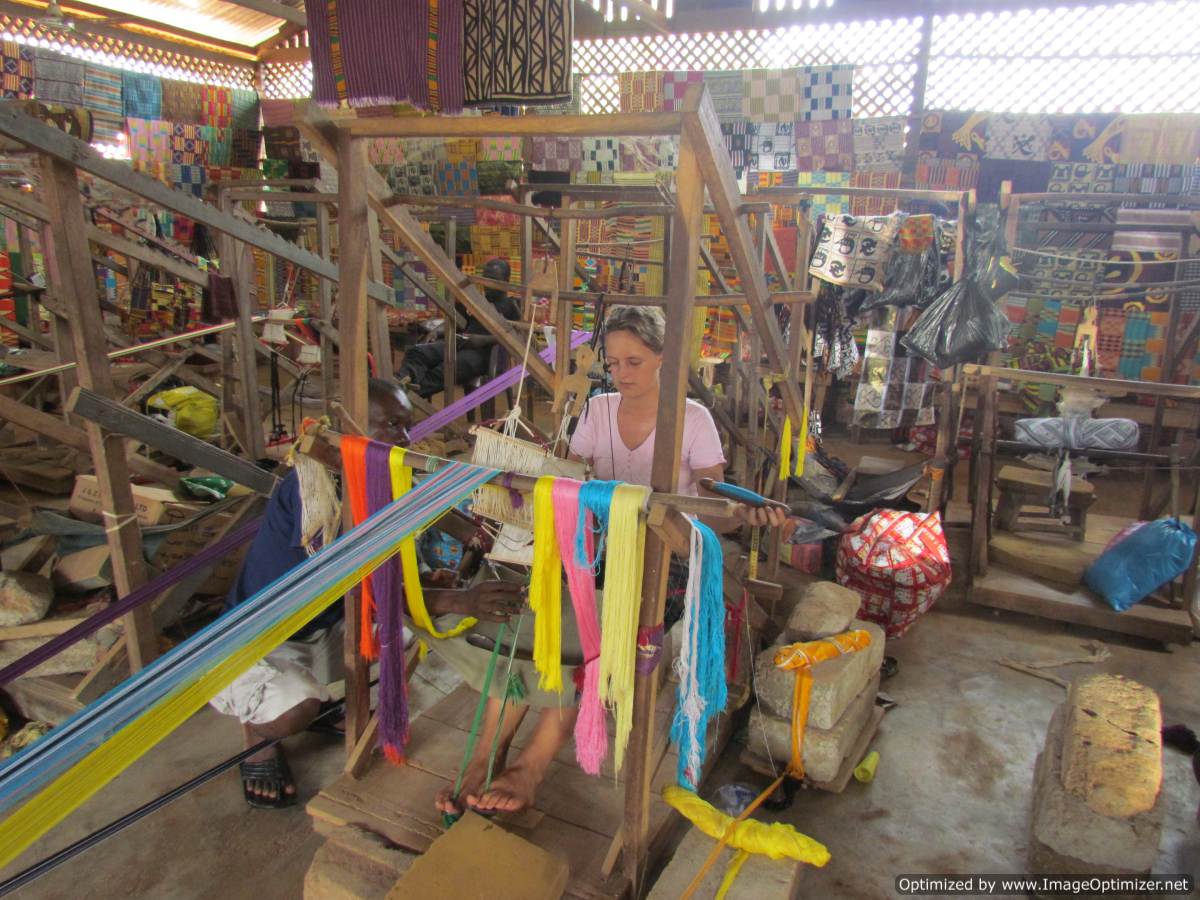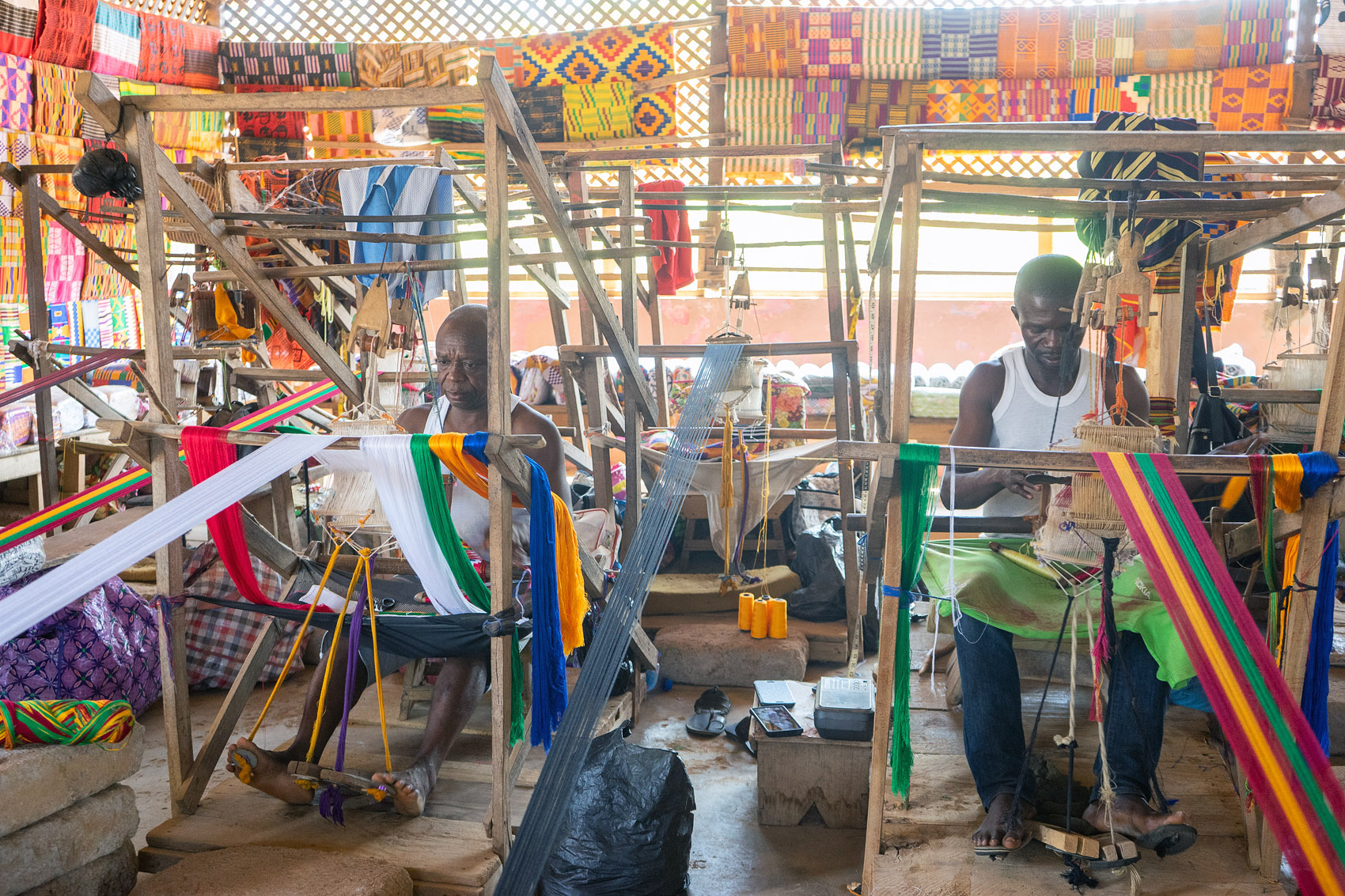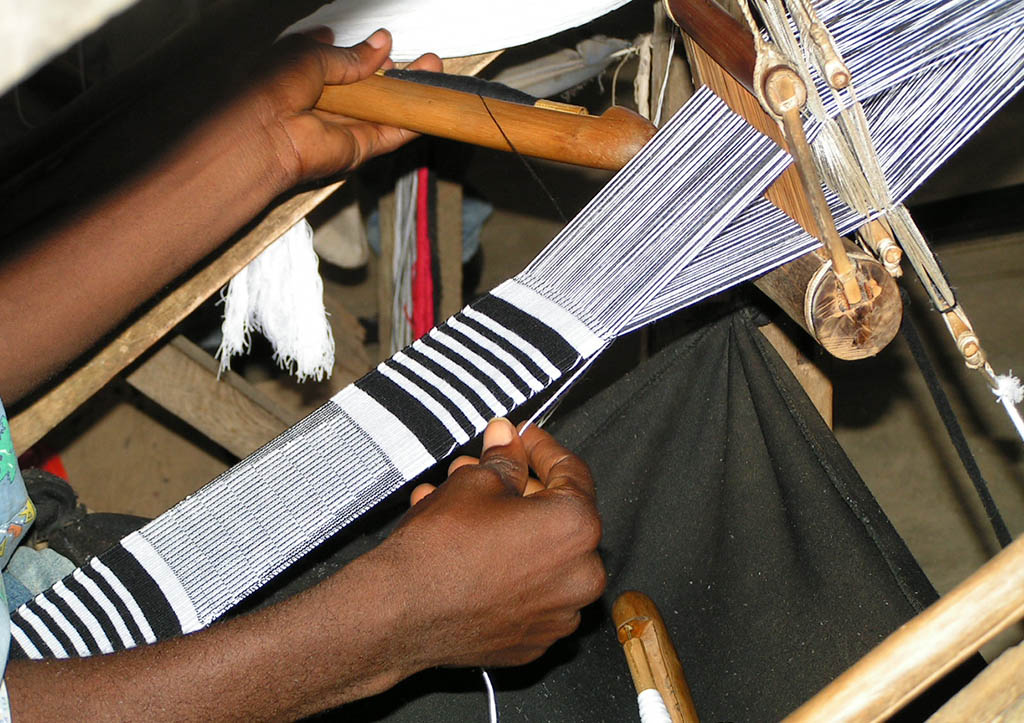Bonwire Kente Weaving Village
Bonwire (pronounced “Bon-ray”) is a small town with a massive cultural impact. Known globally as the home of Kente, Bonwire is the heartbeat of Ghana's traditional textile heritage, where color, symbolism, and craftsmanship unite to create the country’s most celebrated fabric.
The origins of Kente cloth trace back over 400 years, deeply rooted in Ashanti royalty and spirituality. Oral history says that two friends from Bonwire, Ota Karaban and Kwaku Ameyaw, observed a spider weaving its web and were inspired to try weaving themselves using black-and-white raffia fibers.
Kente weaving evolved significantly when it was adopted by the Ashanti royal court, particularly under the reign of the legendary Asantehene Osei Tutu I. The cloth became a royal treasure, worn only by kings, chiefs, and priests for sacred events.
Over time, the use of cotton and silk threads enhanced its appearance, and the meanings embedded in its colorful patterns gained more prominence.
Origins in Legend: Two hunters from Bonwire; Kuragu and Ameyaw were inspired by a spider weaving its web to create cloth, a craft they presented to the Asantehene, who embraced it as a royal tradition.
Etymology: The name “Kente” derives from the Akan phrase “Kenten-Nwin-Ntoma” (“basket-cloth”), referring to its woven patterns.
Royal Patronage: Under King Osei Tutu I, the craft was elevated to royal status, with increased refinement under Opoku Ware I in 1721, who honored the inventors with ceremonial stools.
Patterns, Symbolism & Techniques
Designs & Meaning: Each Kente pattern carries a unique name and story derived from proverbs, historical moments, or societal values.
Colors: Natural dyes imbue Kente with symbolic hues red for sacrifice, green for growth, yellow/gold for prosperity, blue for harmony.
Craft Tradition: Woven on wooden looms by male artisans, while women prepare yarns and dye threads according to cultural custom.
Living Tradition: Despite modern challenges, elders and master weavers actively mentor youth to preserve the craft for future generations.
Present-Day Bonwire
Cultural Significance: Bonwire remains a vibrant center for Kente weaving, attracting visitors and sustaining livelihoods through the craft.
Kente Museum: A new museum initiated in 2020 is underway, aimed at promoting the craft, education, and economic growth.
Global Outreach: Kente cloth is featured on international runways and major events; however, handwoven Kente faces competition from cheaper mass‑produced versions.
Each Kente pattern has a name, meaning, and philosophy. Some popular names include:
Eban (safety) – symbolizing security and love within the home.
Adwinasa (all motifs used) – reflecting excellence and artistic mastery.
Fathia Fata Nkrumah – a tribute to Ghana’s first president and his Egyptian wife.
Colors also hold significance:
Gold - Royalty & wealth
Blue - Harmony & peace
Green - Growth & renewal
Red - Political & spiritual struggle
Today, Bonwire continues to thrive as a living museum of Kente craftsmanship. Nearly every household in the village is involved in some aspect of Kente production. Young boys often begin learning the trade around age 10, while women dye threads, spin yarns, and handle sales.
Artisans use traditional looms to create patterns that are either custom-designed or passed down generationally. The village supplies Kente for weddings, graduations, enstoolment ceremonies, and global fashion markets.
These visuals provide a well-rounded glimpse into the cultural richness and artisanal craft of Bonwire highlighting the skill, the ambiance of the workshop, and the finished beauty of the iconic Kente fabric.
Related content
Interdum et malesuada fames









